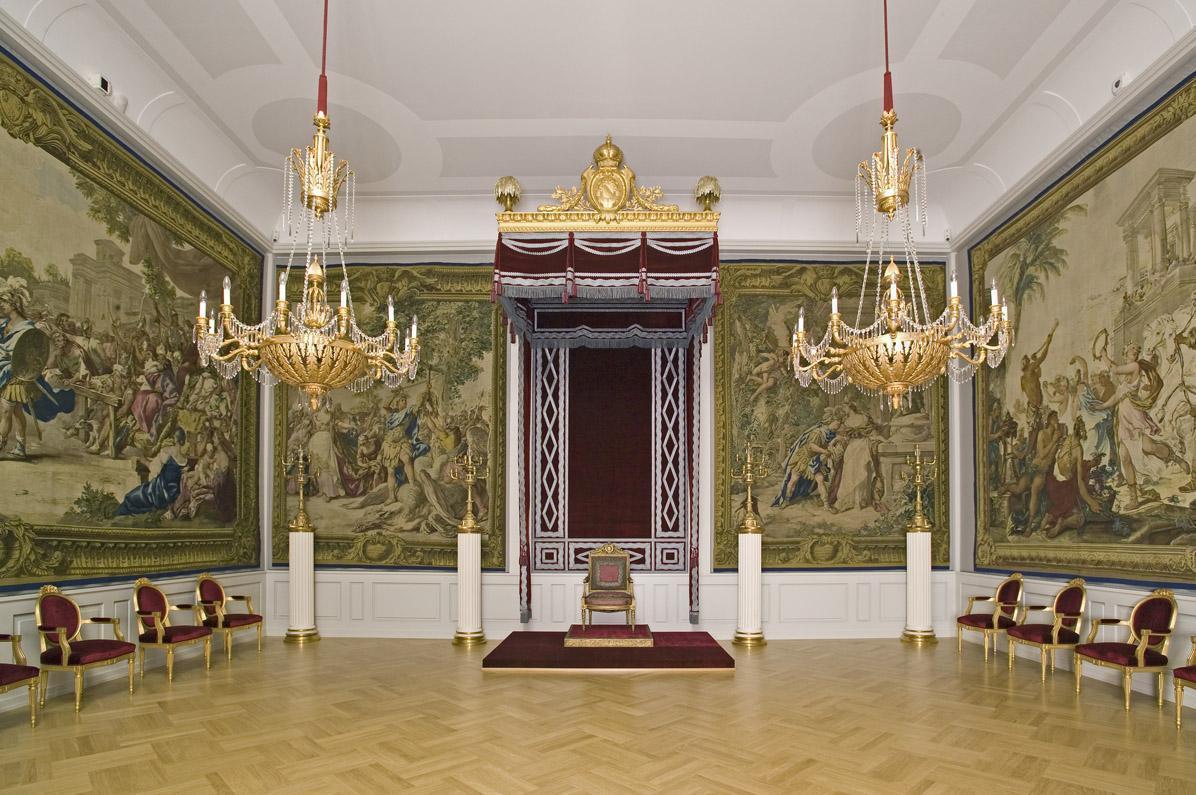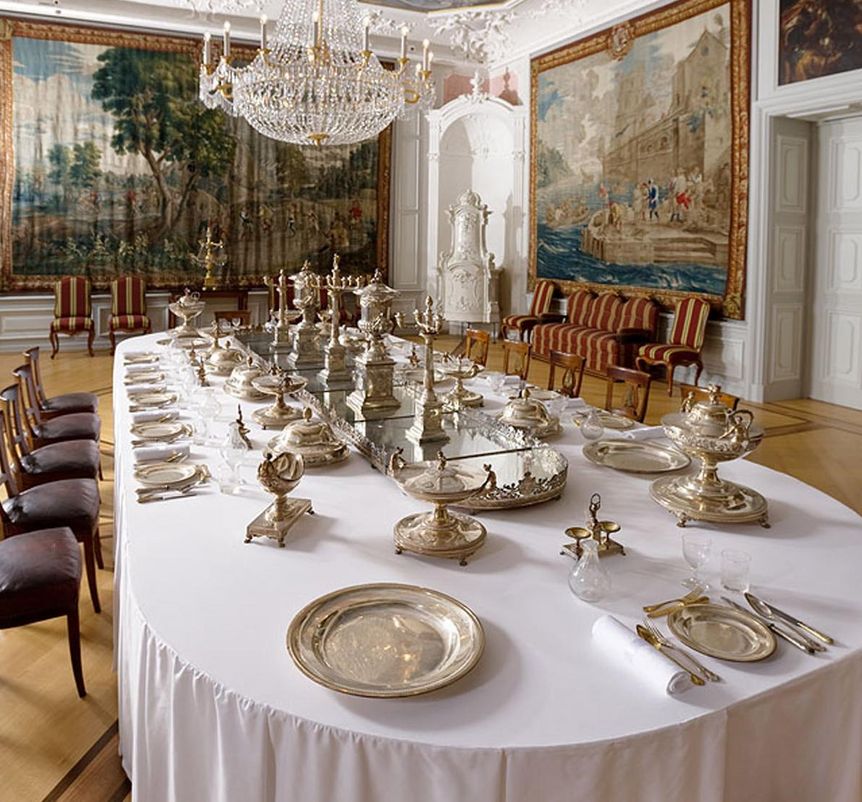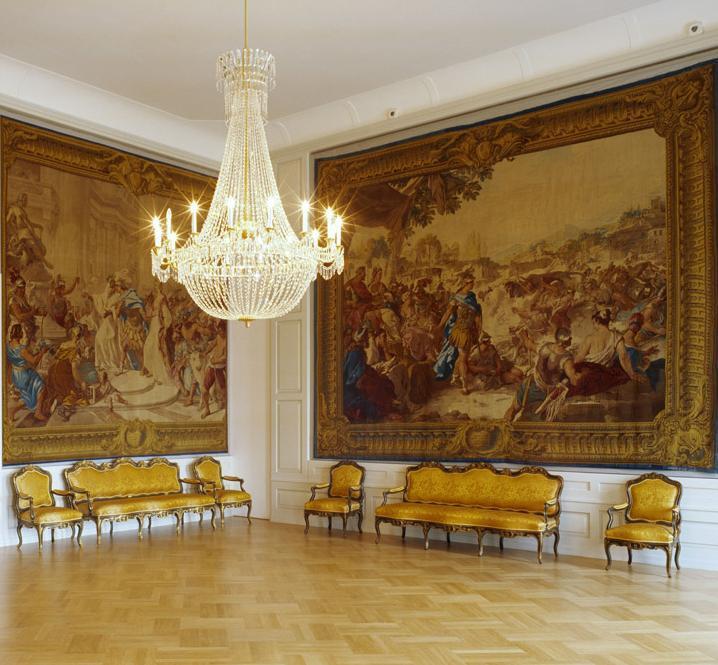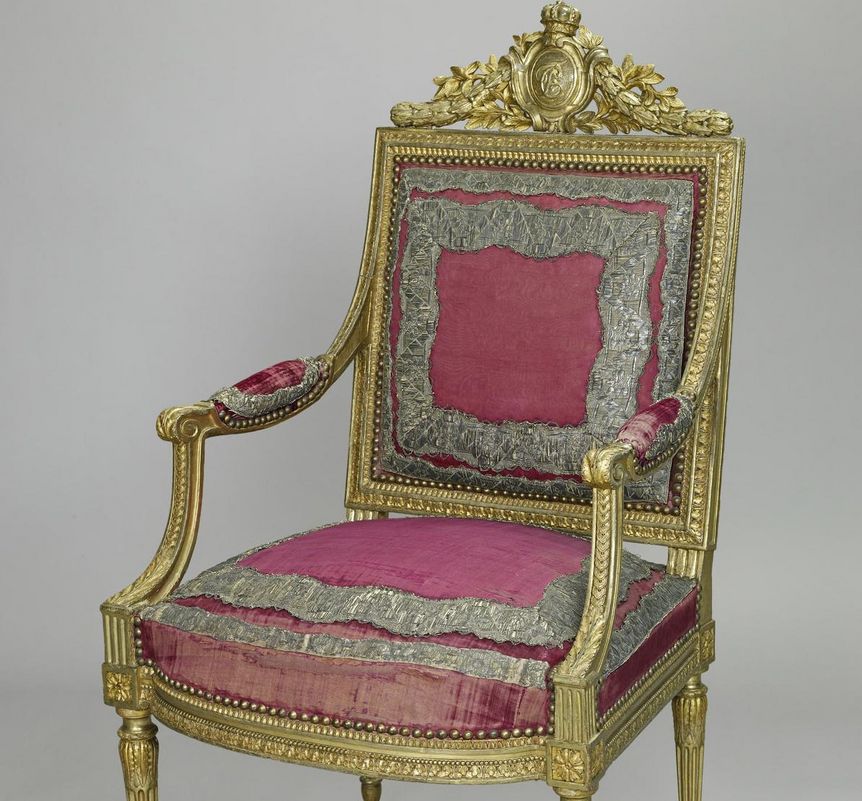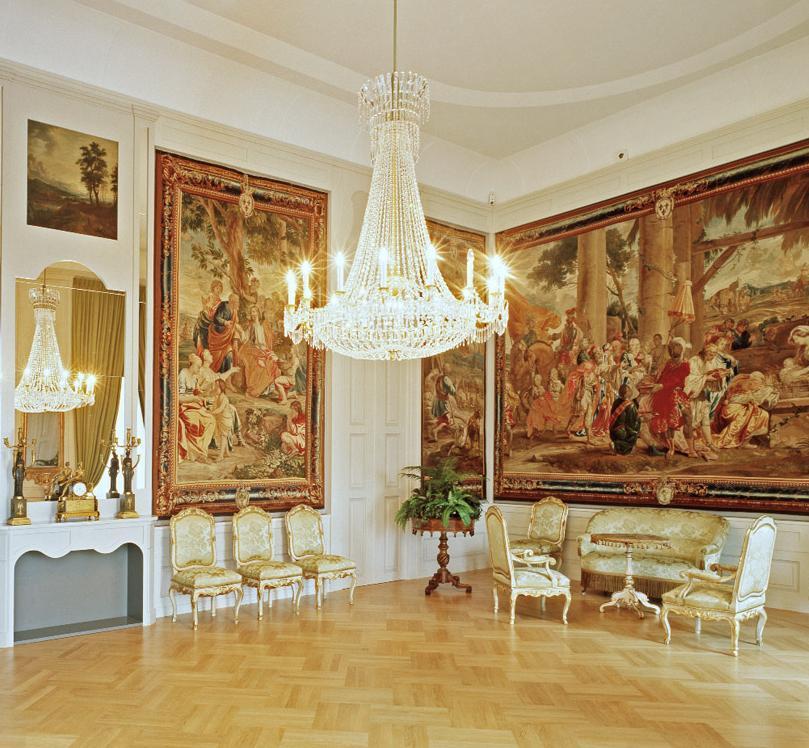The Court Hall – A waiting room
In the 18th century, the room was used as a second antechamber to the throne room, but also as a dining room. Correspondingly, there are various seating options along the walls. It was not until the 19th century that the antechamber was called the Court Hall, from the French "cour," or "court." Carl Friedrich von Baden purchased the richly detailed tapestries from the collection of Louis René Édouard de Rohan-Guémené, Prince-bishop of Strasbourg, in 1803. They were made in Paris between 1762 and 1767 and depicted scenes from Greek mythology featuring the hero Jason, leader of the Argonauts.



